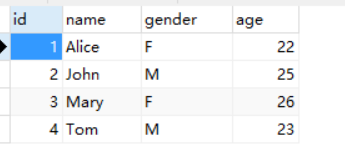1.Spark SQL 基本操作
将下列 JSON 格式数据复制到 Linux 系统中,并保存命名为 employee.json。
{ "id":1 , "name":" Ella" , "age":36 }
{ "id":2, "name":"Bob","age":29 }
{ "id":3 , "name":"Jack","age":29 }
{ "id":4 , "name":"Jim","age":28 }
{ "id":4 , "name":"Jim","age":28 }
{ "id":5 , "name":"Damon" }
{ "id":5 , "name":"Damon" }
为 employee.json 创建 DataFrame,并写出 Scala 语句完成下列操作:
(1) 查询所有数据;

(2) 查询所有数据,并去除重复的数据;
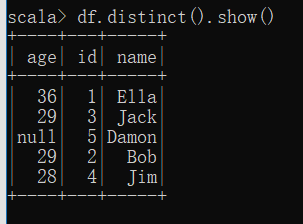
(3) 查询所有数据,打印时去除 id 字段;
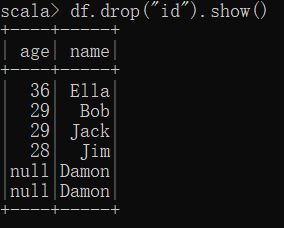
(4) 筛选出 age>30 的记录;

(5) 将数据按 age 分组;
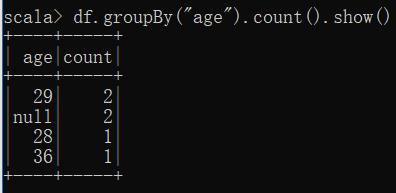
(6) 将数据按 name 升序排列;

(7) 取出前 3 行数据;

(8) 查询所有记录的 name 列,并为其取别名为 username;
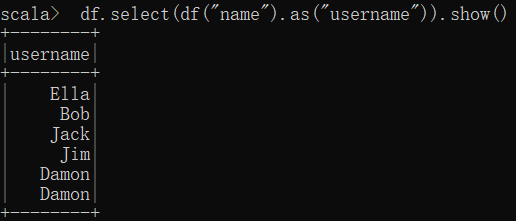
(9) 查询年龄 age 的平均值;

(10) 查询年龄 age 的最小值。

2.编程实现将 RDD 转换为 DataFrame
源文件内容如下(包含 id,name,age):
1,Ella,36
2,Bob,29
3,Jack,29
请将数据复制保存到 Linux 系统中,命名为 employee.txt,实现从 RDD 转换得到
DataFrame,并按“id:1,name:Ella,age:36”的格式打印出 DataFrame 的所有数据。请写出程序代
码。
package cn.spark.study.sy5 import org.apache.spark.{SparkConf, SparkContext} import org.apache.spark.sql.{Row, SQLContext} import org.apache.spark.sql.types.{StringType, StructField, StructType} object Testsql { def main(args: Array[String]) { val conf = new SparkConf() conf.setMaster("local") .setAppName("Testsql") val sc = new SparkContext(conf) val sqlContext = new SQLContext(sc) //hdfs://192.168.6.134:9000/nlc/1.txt //H:文件数据集 val studentRDD = sc.textFile("D:\myDevelopTools\Intellij IDEA\workplace\spark-study-scala\src\main\java\cn\spark\study\sy5\employee.txt", 1) .map { line => Row(line.split(",")(0), line.split(",")(1), line.split(",")(2)) } // 第二步,编程方式动态构造元数据 val structType = StructType(Array( StructField("id", StringType, true), StructField("name", StringType, true), StructField("age", StringType, true))) // 第三步,进行RDD到DataFrame的转换 val studentDF = sqlContext.createDataFrame(studentRDD, structType) // 继续正常使用 studentDF.registerTempTable("employee") // val teenagerDF = sqlContext.sql("select usrid,count(usrid) from students group by usrid order by usrid") val teenagerDF = sqlContext.sql("select id,name,age from employee") val teenagerRDD = teenagerDF.rdd.collect().foreach { row => println("id:"+row(0)+",name:"+row(1)+",age:"+row(2)) } } }

3. 编程实现利用 DataFrame 读写 MySQL 的数据
(1)在 MySQL 数据库中新建数据库 sparktest,再创建表 employee,包含如表 6-2 所示的
两行数据。
表 6-2 employee 表原有数据
id name gender Age
1 Alice F 22
2 John M 25
(2)配置 Spark 通过 JDBC 连接数据库 MySQL,编程实现利用 DataFrame 插入如表 6-3 所
示的两行数据到 MySQL 中,最后打印出 age 的最大值和 age 的总和。
表 6-3 employee 表新增数据
id name gender age
3 Mary F 26
4 Tom M 23
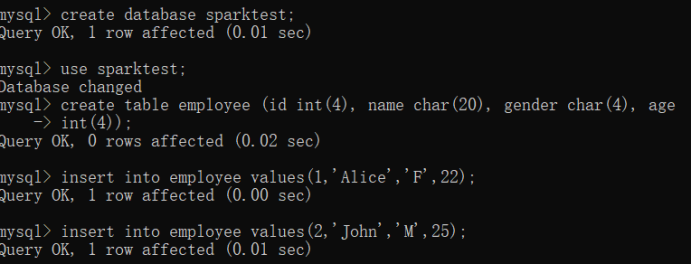
package cn.spark.study.sy5 import java.util.Properties import org.apache.spark.{SparkConf, SparkContext} import org.apache.spark.sql.types._ import org.apache.spark.sql.{Row, SQLContext} /** * Created by Lenovo on 2019/3/27. */ object TestMySQL { def main(args: Array[String]) { val conf = new SparkConf() conf.setMaster("local") .setAppName("Testsql") val sc = new SparkContext(conf) val sqlContext = new SQLContext(sc) val employeeRDD = sqlContext.sparkContext.parallelize(Array("3 Mary F 26","4 Tom M 23")).map(_.split(" ")) val schema = StructType(List(StructField("id", IntegerType, true),StructField("name", StringType, true),StructField("gender", StringType, true),StructField("age", IntegerType, true))) val rowRDD = employeeRDD.map(p => Row(p(0).toInt,p(1), p(2),p(3).toInt)) val employeeDF = sqlContext.createDataFrame(rowRDD, schema) val prop = new Properties() prop.put("user", "root") prop.put("password", "123123") prop.put("driver","com.mysql.jdbc.Driver") employeeDF.write.mode("append").jdbc("jdbc:mysql://localhost:3306/sparktest", "sparktest.employee", prop) val jdbcDF = sqlContext.read.format("jdbc").option("url", "jdbc:mysql://localhost:3306/sparktest").option("driver","com.mysql.jdbc.Driver").option("dbtable","employee").option("user","root").option("password", "123123").load() jdbcDF.agg("age" -> "max", "age" -> "sum") } }
